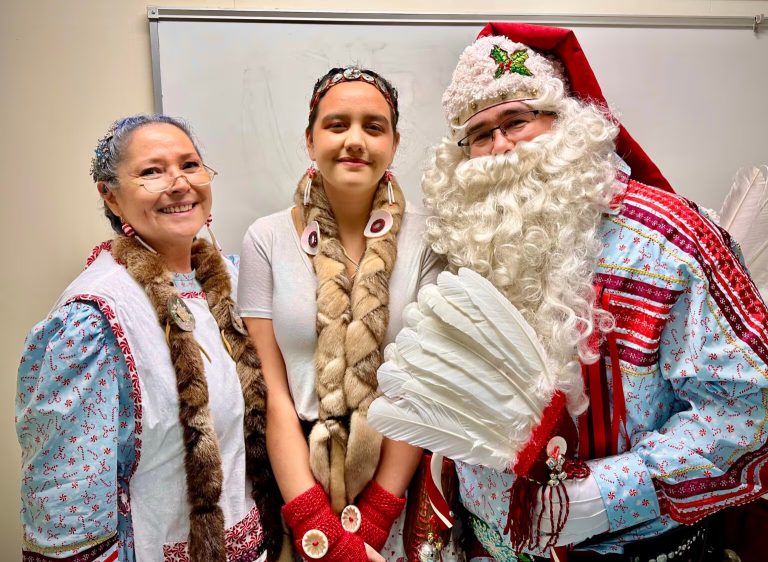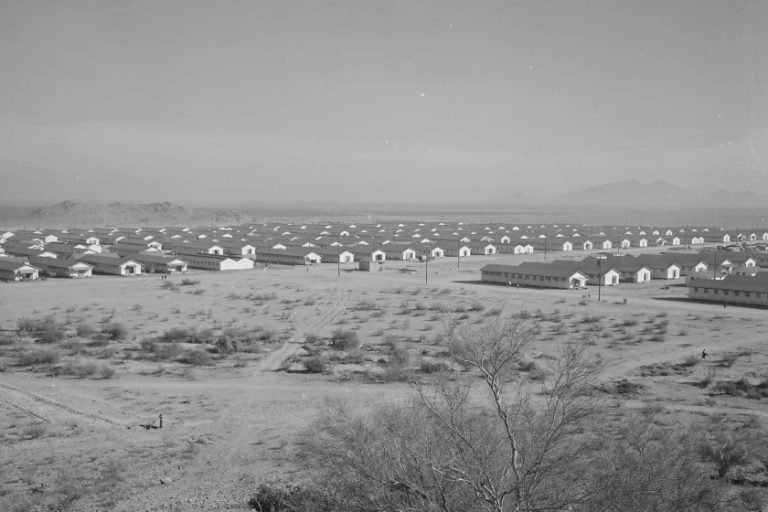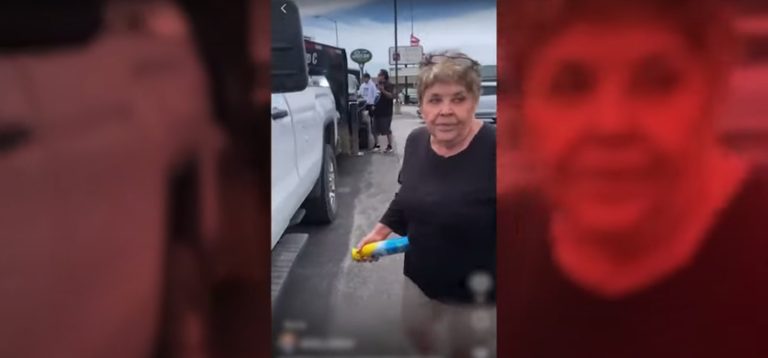The National Native News Elections Project aims to shine the spotlight on elections and how they relate to Native American and Alaska Native voters. The news reports will air up to and after the Nov. 2016 election in the National Native News newscasts.
The project is funded in part by the Carnegie Corporation of New York and the Corporation for Public Broadcasting. It’s aimed at increasing the diversity and scope of elections coverage and building the capacity of reporters reporting on voting issues in their respective communities. For more information on voting in your community, go to the non-partisan NativeVote.org, organized by the National Congress of American Indians.
Meet the reporters for the National Native News Elections Project
Montana’s Denise Juneau ponders what’s next after failed congressional bid
Just a month after losing her hard-fought congressional bid, Montana’s Denise Juneau is looking to turn defeat into a new opportunity. “We just lost,” Juneau said. “People believed in this race, they believed in my candidacy and you can’t ask for more than that.” She’d hoped to be the first Native American in Congress. Now, Juneau confirms she’s interested in the top post at the University of Montana.
Environmental leader predicts fights with incoming Trump administration

(Photo: screen capture from Vine)
The head of a Native American-focused environmental initiative is gearing up for a fight with the incoming Trump administration. Honor the Earth Executive Director Winona LaDuke has strong words about the president-elect’s views on energy development. LaDuke can claim a victory after the company behind the controversial Sandpiper Pipeline through northern Minnesota – Enbridge Energy Partners – ended that project in September 2016. But there’s no time for her to rest on her laurels. “None of us expected Donald Trump would be elected,” LaDuke said.
Concern and hope facing Donald Trump’s first 100 days
 Some tribal leaders in the U.S. are expressing concern following last week’s election of Republican Donald Trump. They worry some of Trump’s plans for his first hundred days in office could negatively impact Indian Country.
Some tribal leaders in the U.S. are expressing concern following last week’s election of Republican Donald Trump. They worry some of Trump’s plans for his first hundred days in office could negatively impact Indian Country.
Trump has vowed deep federal spending cuts after he takes the oath of office in January. But some tribal leaders say that could threaten education, housing, healthcare and family service programs that benefit Native Americans. Some of those are protected under federal treaties.
Left out by candidates’ support for northern Minnesota mining proposals

Candidates for Minnesota’s 8th District largely support controversial mining proposals, including reviving this facility idled in 2001 (Photo: Polymet Mining)
The close race for Minnesota’s Eighth Congressional District has focused largely on jobs and the connection each of the candidates has to the presidential contenders. Neither of the candidates–Democrat Rick Nolan and Republican Stewart Mills–has directly addressed Native American issues. One of those issues is the proposed PolyMet Mining open-pit copper-nickel mine.
Montana likely to retain strong Native American representation
In all but a small handful of states, Native Americans are elected at a rate that falls well short of their percentage of the population. And there are only two Native American members of Congress. But Native Americans living in Montana have some of the best representation at the state level in the country.
Enough Native Americans are running unopposed or even against other Native Americans that tribal members are guaranteed eight of the 150 seats in the House or Senate.
Appealing to the conservative Native American voter
 As a group, Native Americans traditionally vote Democrat. Their economic status and views on environmental issues, among other things, tend to align more with established democratic ideals. President Obama helped solidify that support by actively reaching out to tribes during his two terms in office. But there are significant pockets of conservative Native voters, most notably in Oklahoma. Two conservative leaders there are working to attract more Native American voters
As a group, Native Americans traditionally vote Democrat. Their economic status and views on environmental issues, among other things, tend to align more with established democratic ideals. President Obama helped solidify that support by actively reaching out to tribes during his two terms in office. But there are significant pockets of conservative Native voters, most notably in Oklahoma. Two conservative leaders there are working to attract more Native American voters
Alaska ballot measure aims to improve Native voter access
 A ballot measure in Alaska would automatically register residents to vote. Alaska Native groups are lining up in favor of Ballot Measure One which aims to increase voter participation among people who are often left out of the political process. It enjoys support from Republicans and Democrats alike. But some conservatives are now speaking out, bringing up the specter of voter fraud.
A ballot measure in Alaska would automatically register residents to vote. Alaska Native groups are lining up in favor of Ballot Measure One which aims to increase voter participation among people who are often left out of the political process. It enjoys support from Republicans and Democrats alike. But some conservatives are now speaking out, bringing up the specter of voter fraud.
Reducing barriers to the polls

Northern Minnesota is known for lakes, iron mining and low turnout among Native voters (Photo: Roy Luck via Flickr/CC)
Northern Minnesota is home to seven Anishinaabe reservations. But the Native turnout is typically low. The Native communities are less politically organized than unions and other groups in the traditionally blue-collar mining area of the state.
“Indigenous people – they just don’t care – because they don’t feel like their vote counts,” Renee Van Nett said. She lives in Duluth and is from the Leech Lake Band of Ojibwe. She tried—and failed—to win a Duluth School Board seat last year. She wants the predominant tribes of northern Minnesota to return to their roots of being participants in the political sphere.
“I try to talk to them about that but they just don’t care,” she said. “There’re a lot of us. And we do not vote in high numbers, so that needs to change.”
Navajo Nation officials put their weight behind Clinton

Navajo Nation Vice President Jonathan Nez campaigning for Democrat Hillary Clinton (Photo: courtesty DNC)
Recent polls show Arizona is one of a handful of toss-up states in the U-S presidential election. That could give increased prominence to the Native American vote in the historically red state. Endorsements of Hillary Clinton by Navajo Nation President Russell Begaye and Vice President Jonathan Nez could be a deciding factor.
Minneapolis voting drive targets urban Native American participation
 Minneapolis Minnesota has one of the largest Urban Indian populations in the country. Native people make up between 2 and 3 percent of the city’s population. For some races, that’s a make-or-break number. One organization hopes to improve Native voter turnout by talking about issues important to them, like the protests against the oil pipeline at the Standing Rock Sioux Reservations.
Minneapolis Minnesota has one of the largest Urban Indian populations in the country. Native people make up between 2 and 3 percent of the city’s population. For some races, that’s a make-or-break number. One organization hopes to improve Native voter turnout by talking about issues important to them, like the protests against the oil pipeline at the Standing Rock Sioux Reservations.
Montana GOP platform wording: a change in recognizing sovereignty?
 A one-word change in the Montana state Republican Party platform is leaving some tribal members confused about how the party sees them. Depending on who you ask, it’s either a clarification or chipping away at tribal sovereignty. The Native American Affairs platform plank used to say: “The Montana Republican party supports American Indian Tribal nations and their treaties with the Federal Government.” It now reads “…American Indian Tribal peoples.”
A one-word change in the Montana state Republican Party platform is leaving some tribal members confused about how the party sees them. Depending on who you ask, it’s either a clarification or chipping away at tribal sovereignty. The Native American Affairs platform plank used to say: “The Montana Republican party supports American Indian Tribal nations and their treaties with the Federal Government.” It now reads “…American Indian Tribal peoples.”
Three months after losing nomination, Bernie Sanders still appeals to Native American voters
Some Native American voters feel they’re being left out in the cold in the presidential election. Former Democratic candidate Bernie Sanders was the only one who routinely spoke about issues important to them. Now he’s campaigning for Hillary Clinton.
One family at a Sanders event in Duluth remain hopeful the other candidates will take Sanders’ lead.
Arizona’s 7th Legislative District race is all but decided

Jamescita Peshlakai is the unopposed candidate for the Senate seat in Arizona’s 7th Legsilative District being vacated by Carlyle Begaye (Photo: Peshlakai for Senate)
Arizona’s Seventh Legislative District is gearing up for a new direction. The outcome of the election was all but certain from the beginning. That’s because Democratic state senate candidate Jamescita Peshlakai is running for the seat without any opposition from a major party. The district covers much of the northern and eastern parts of the state that includes several tribal nations.
AFN breaks with tradition by endorsing Clinton for president
By National Native News staff
For the first time in its 50-year history, Alaska’s largest statewide Native organization has endorsed a presidential candidate.
In a statement, the Alaska Federation of Natives said Hillary Clinton is the best choice for president because of her long record of support for native priorities and her “commitment to continued and authentic engagement.”
“The question came down to: do we move forward and continue to build our rights as native people, or do we accept being marginalized as native people and put on the back burner?”, said AFN President Julie Kitka during a joint meeting between leadership from the AFN and the National Congress of American Indians. AFN represents nearly 80,000 people. The organization’s statement never mentions Republican candidate Donald Trump by name.
NCAI’s constitution prevents that organization from endorseing candidates. But, when it came time for the organization’s executive director to speak about work with Alaska Native people, Jacqueline Pata used words that echo the Clinton campaign.
“We’re better when we are together and we’re stronger,” Pata said. She said the organization will not endorse any candidate, but top NCAI leadership personally endorsed Clinton earlier this year.
Coal comes up as a campaign issue in the congressional district with the highest proportion of Native American Voters

Republican Paul Babeua (left) and Democrat Tom O’Halleran are both vying for Arizona’s 1st Congressional District seat.
Native Americans from the Hopi, White Mountain Apache and other tribes make up a quarter of Arizona’s sprawling, mostly rural 1st Congressional District. It’s the district with the largest Native American population in the country. Republican Paul Babeu and Democrat Tom O’Halleran are competing for the district’s open seat. It also includes much of the Navajo Nation, where unemployment is nearly 50 percent. Both candidates have campaigned in the traditionally Democratic-leaning area, and have focused largely on economic issues and job creation.







Your report on American Indian turnout in northern Minnesota may be true for Duluth or Fond du Lac, but I will have you know that we have very high turnout on the Red Lake Indian Reservation. In fact i just sent you a story on the 20th Anniversary of the Red Lake Political Education Committee, the longest and most effective committee in Ojibwe Country.
Michael Meuers, Secretary
Red Lake Political Education Committee
Red Lake Political and Public Relations